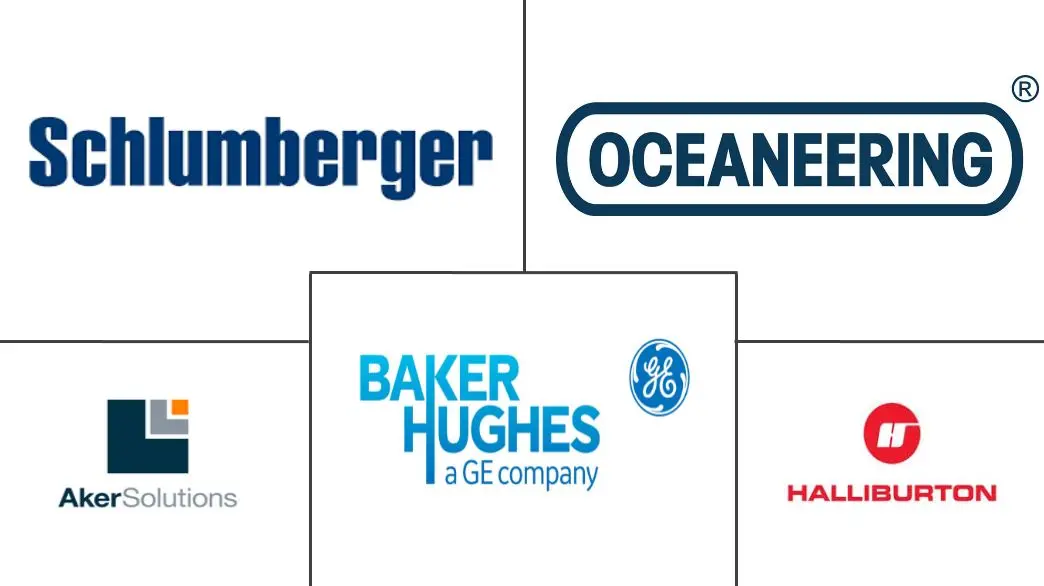Subsea Pump Market Size and Share
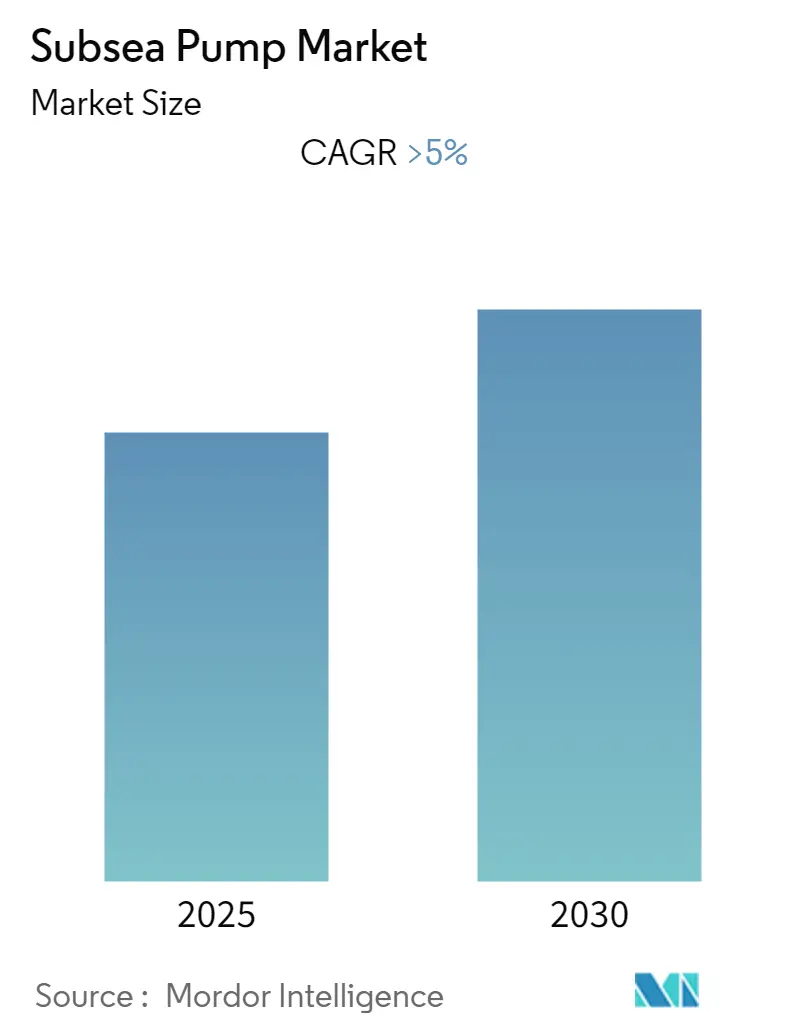
Subsea Pump Market Analysis by Mordor Intelligence
The Subsea Pump Market is expected to register a CAGR of greater than 5% during the forecast period.
In 2020, COVID-19 had a detrimental effect on the market. Presently, the market has reached pre-pandemic levels.
- Over the medium term, with the increasing number of onshore fields reaching maturity, exploration and production activity is expected to make a shift toward deeper offshore regions, which is expected to result in an increase in offshore deep-ultra deepwater projects. This, in turn, is expected to drive the market during the forecast period.
- On the other hand, a highly volatile crude oil price scenario in recent years, owing to the supply-demand gap, geopolitics, and several other factors, is expected to hinder the growth of the market studied during the forecast period.
- Nevertheless, the major companies are investing in ongoing R&D projects for the advancement of technology to reduce the overall cost of offshore expenditures. Subsea pumps are employed primarily in mature offshore fields to improve the recovery rate by reducing back-pressure on the reservoir, thereby lowering the production expenditure. The ability to reduce the cost of a subsea pump is providing the opportunity to propel the market in the coming future.
- South America dominated the market across the globe in 2018, with the majority of the demand coming from Brazil. The fastest-growing region is Asia-Pacific, then Europe.
Global Subsea Pump Market Trends and Insights
Deepwater Sector to Dominate the Market
- The oil and gas industry is engaged in a rising movement to identify new techniques and technologies that can help them maximize revenues from existing brownfields and new assets by enhancing their outputs.
- In 2021, global crude oil production amounted to approximately 4.2 billion metric tons. Exploration and production activities in various water depths have become a challenge for the offshore industry. As the subsea developments have further moved offshore and into deeper waters, the technical difficulty has continuously increased. A wide range of subsea layouts and production systems are used for deepwater developments, associated with the overall process and the equipment involved in drilling, field development, and field operation.
- With the rising number of maturing oilfields in recent years, there has been growth in offshore exploration and production (E&P) activities. For instance, in the Permian Basin, currently the most important basin in terms of crude oil production, the production from old wells has started to decline, and there is little scope for discovery in these areas. As a result, the oil and gas industry is shifting toward deeper offshore regions to search for oil and gas to meet the increasing demand.
- Also, offshore projects have a high lead time and are expensive. Before the operators invested in the production infrastructure, they built other infrastructure that required high CAPEX. Hence, the development of the projects, for which the FIDs have already been taken and development has begun, is likely to continue to recover the investment through oil and gas production revenues. These projects are expected to be significant drivers during the first half of the forecast period.
- As of 2021, the offshore oil and gas industry accounted for about 30% of global crude oil production. The Middle East, North Sea, Brazil, the Gulf of Mexico, and the Caspian Sea are the major offshore oil and gas producing regions. In addition to this, the availability of abundant resources, coupled with increased potential to recover oil and gas from deepwater and ultra-deepwater areas, is expected to provide a great opportunity for the market to be studied.
- Furthermore, during the stable oil price environment, the deepwater and ultra-deepwater projects witnessed a spike in revenue as the projects, which were not viable due to low crude oil prices, got started and increased the CAPEX.
- Therefore, with increasing offshore exploration investment and oil production from newly developed fields, the deepwater sector is expected to dominate the market in the forecast period.
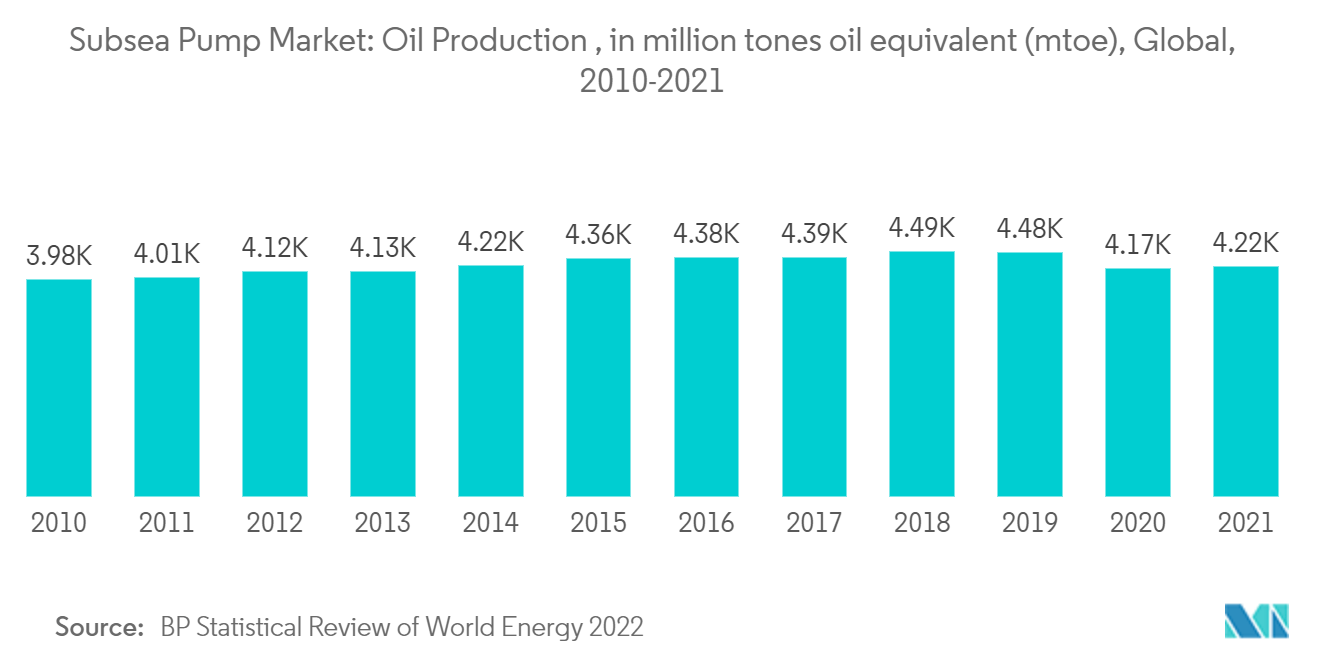
South America to Witness Significant Growth
- The region has witnessed significant offshore oil and gas activity in the last few years. This can be attributed to the lower breakeven prices and competitive payback times compared to offshore oil and gas projects worldwide, making them more resilient in the current turbulent times.
- As of 2021, Brazil was the major country in South America regarding oil and gas spending. The country's offshore pre-salt oil fields pumped around 50% of the total oil output, which increased to approximately 75% by the end of 2020. This increasing production and dependency on offshore oil and gas fields can be attributed to steadily decreasing production expenses due to improved drilling technology, growing expertise in the offshore oil and gas industry, and increased infrastructure.
- Furthermore, Argentina's state-owned oil company YPF's CAPEX in 2021 stood at around USD 2.71 billion, representing an increase of almost 74% when compared to the value in 2020 (CAPEX in 2020: USD 1.55 billion); the company is planning to further increase the CAPEX in the country's oil and gas sector, especially in the upstream activities, during the forecast period.
- Colombia is showing signs of development in the country's oil and gas sector. In 2021, Colombia's state-owned oil company Ecopetrol set a CAPEX target of USD 5 billion, i.e., an increase of about 30% compared to the expected value (USD 3.5 billion) in 2021. This anticipated increase is because exploration and production projects at home and abroad are ramping up. The latest investment and upcoming projects in deepwater are likely to drive the growth of the subsea pump market during the forecast period in the South America region.
- Owing to the above points and recent developments, South America is expected to witness significant growth in the subsea pump market during the forecast period.
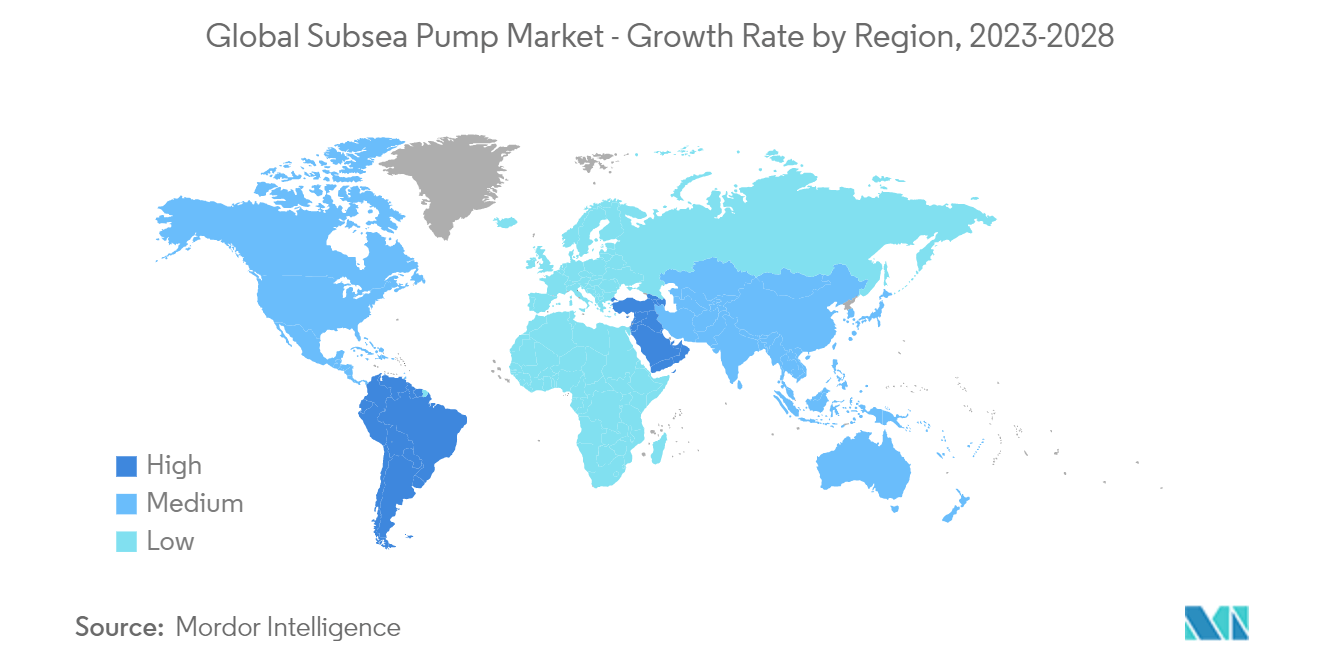
Competitive Landscape
The subsea pump market is moderately fragmented. Some of the major players in the market (in no particular order) include Aker Solutions ASA, Baker Hughes A GE Co., Halliburton Company, Schlumberger Limited, Weatherford International PLC, and Oceaneering International.
Subsea Pump Industry Leaders
-
Aker Solutions ASA
-
Halliburton Company
-
Oceaneering International Inc.
-
Schlumberger Limited
-
Baker Hughes Co
- *Disclaimer: Major Players sorted in no particular order
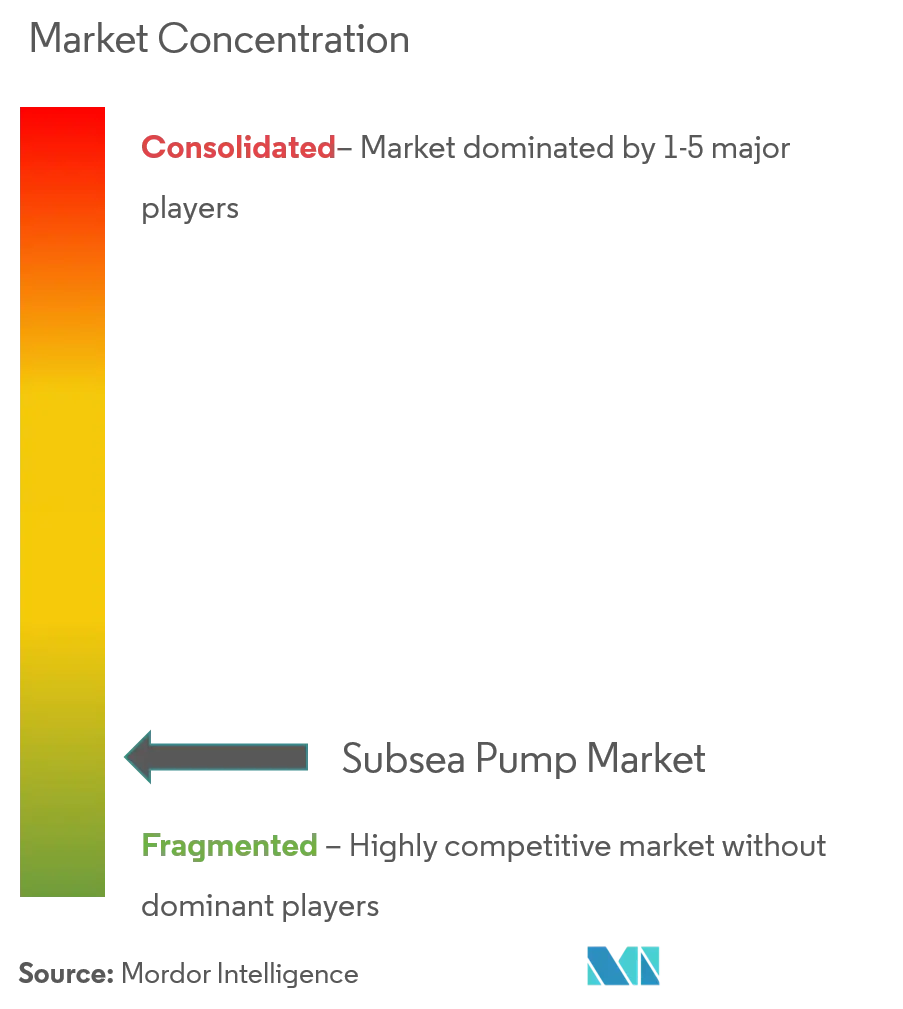
Recent Industry Developments
- August 2022: Equinor and Var Energi agreed to join Malaysian operator Petronas with the support of Norwegian company FASTsubsea as part of a Joint Industry Program to qualify and test what was described as "a low-cost, topside-less subsea multiphase pump." Equinor and Vår Energi were expected to support the development and testing program with funding and end-user expertise.
- August 2022: Schlumberger, Aker Solutions, and Subsea 7 announced a joint venture to drive innovation and efficiency in subsea production by helping customers unlock reserves and reduce cycle time. The agreement was expected to bring together a portfolio of technologies such as subsea gas compression, subsea pump systems, all-electric subsea production systems, and other electrification capabilities to help customers meet their decarbonization goals.
Global Subsea Pump Market Report Scope
Subsea pump systems allow for boosting either hydrocarbon fluids or water in the case of water injection directly on the seabed.
The subsea pump market report is segmented by deployment, application, and geography (North America, Europe, Asia-Pacific, South America, the Middle East, and Africa). By deployment, the market is segmented into shallow water and deep water. By application, the market is segmented into boosting, separation, injection, and other applications. The report also covers the market size and forecasts for the subsea pump market across major regions. For each segment, market sizing and forecasts have been done based on revenue (value in USD billion).
| Shallow water |
| Deep Water |
| Boosting |
| Separation |
| Injection |
| Other Applications |
| North America | United States |
| Canada | |
| Mexico | |
| Asia-Pacific | China |
| India | |
| Australia | |
| Indonesia | |
| Europe | United Kingdom |
| France | |
| Germany | |
| Rest of Europe | |
| South America | Brazil |
| Colombia | |
| Chile | |
| Argentina | |
| Middle-East and Africa | United Arab Emirates |
| Saudi Arabia | |
| South Africa | |
| Rest of Middle-East and Africa |
| By Deployment | Shallow water | |
| Deep Water | ||
| By Application | Boosting | |
| Separation | ||
| Injection | ||
| Other Applications | ||
| By Geography | North America | United States |
| Canada | ||
| Mexico | ||
| Asia-Pacific | China | |
| India | ||
| Australia | ||
| Indonesia | ||
| Europe | United Kingdom | |
| France | ||
| Germany | ||
| Rest of Europe | ||
| South America | Brazil | |
| Colombia | ||
| Chile | ||
| Argentina | ||
| Middle-East and Africa | United Arab Emirates | |
| Saudi Arabia | ||
| South Africa | ||
| Rest of Middle-East and Africa | ||
Key Questions Answered in the Report
What is the current Subsea Pump Market size?
The Subsea Pump Market is projected to register a CAGR of greater than 5% during the forecast period (2025-2030)
Who are the key players in Subsea Pump Market?
Aker Solutions ASA, Halliburton Company, Oceaneering International Inc., Schlumberger Limited and Baker Hughes Co are the major companies operating in the Subsea Pump Market.
Which is the fastest growing region in Subsea Pump Market?
Asia Pacific is estimated to grow at the highest CAGR over the forecast period (2025-2030).
Which region has the biggest share in Subsea Pump Market?
In 2025, the South America accounts for the largest market share in Subsea Pump Market.
What years does this Subsea Pump Market cover?
The report covers the Subsea Pump Market historical market size for years: 2019, 2020, 2021, 2022, 2023 and 2024. The report also forecasts the Subsea Pump Market size for years: 2025, 2026, 2027, 2028, 2029 and 2030.
Page last updated on:
Subsea Pump Market Report
Statistics for the 2025 Subsea Pump market share, size and revenue growth rate, created by Mordor Intelligence™ Industry Reports. Subsea Pump analysis includes a market forecast outlook for 2025 to 2030 and historical overview. Get a sample of this industry analysis as a free report PDF download.
